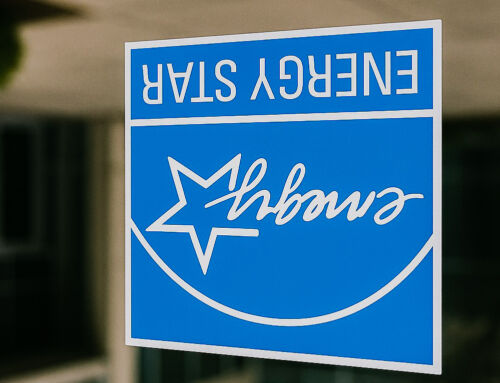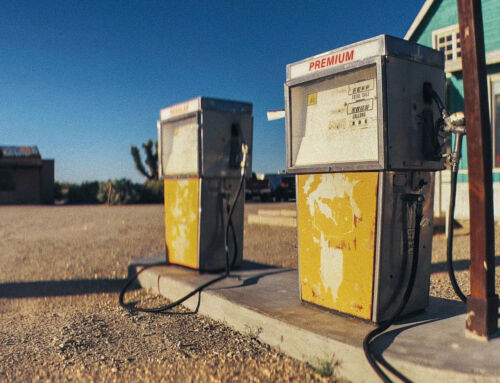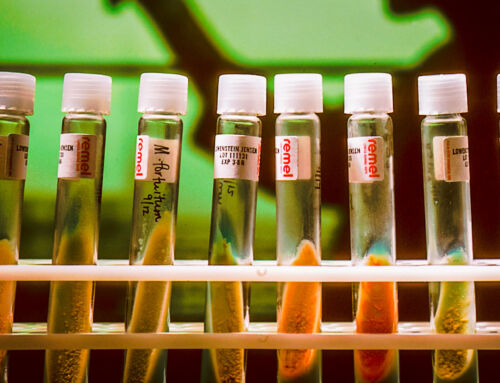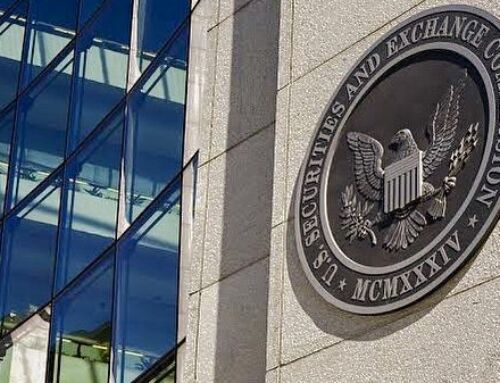View by Topic
Recent Articles
-
Mold Testing in Maryland Real Estate under the New LawSaturday, June 14th, 2025
-
Energy Star: A Quiet Exit and a Bright Future Beyond GovernmentSaturday, June 7th, 2025
-
Congress Blocks California’s Gasoline Car BanSaturday, May 31st, 2025
-
EPA Will Keep Current Limits for “Forever Chemicals” in Drinking WaterSaturday, May 24th, 2025
-
Court Indefinitely Pauses SEC Climate Rule LitigationSaturday, May 17th, 2025
View by Month/Year
“Green Building Law Update” Headlines
Recent Articles & News from
Stuart Kaplow’s blog
at GreenBuildingLawUpdate.com
- Congress Blocks California’s Gasoline Car Ban: A Legal and Policy Analysis June 1, 2025
- EPA Will Keep Current Limits for “Forever Chemicals” in Drinking Water May 25, 2025
- Court Indefinitely Pauses SEC Climate Rule Litigation May 18, 2025
- Maryland is About to Regulate Mold: But is the Cart Before the Horse? May 11, 2025
Subscribe to the Green Building Law Update!
Stuart Kaplow brings his expertise and extensive experience to the table with his unique digital publication, "Green Building Law Update". Subscribers receive regular updates to keep them informed about important issues surrounding Environmental Law, Green Building & Real Estate Law, as well as the emerging demand for Environmental Social Governance (ESG).
Get fresh content through the lense of Stuart Kaplow's cutting-edge expertise, innovative commentary and insider perspective. Don't miss another issue! Subscribe below.
Maryland Local Government Mandatory Green Building Laws and Incentives: “I’m from the government and I’m here to help”
Ronald Reagan was famously quoted for reporting the nine most terrifying words in the English language are, “I’m from the government and I’m here to help.” Current green building and redevelopment government mandates and incentives postdate the 1980s era 40th U.S. President, but most are as terrifying.
This compilation considers and offers guidance with respect to local government mandates and voluntary incentives for privately owned Green building throughout the state of Maryland.
Three Schemes of Government Regulation
Governments across the country are enacting Green building laws that seek to articulate environmental solutions and energy policy, including laws that respond to the overwhelming public sentiment that government has not done enough to protect the planet. This new body of law follows three distinct regulatory schemes. The first regulatory scheme is for a government to require that its government-owned buildings be constructed to an articulated Green building standard. A second, and widely admired, regulatory scheme is when a government offers voluntary incentives to private developers, whether as tax breaks, direct grants or loans, or advantages in processing approvals for Green buildings. And third, a modest but now growing number of local governments are mandating by law that all new construction or major renovations, which exceed a certain square footage, whether public or private, must be constructed to a Green building standard.
This summary responds to and addresses the second two of those regulatory schemes for counties and municipalities within Maryland (and not for the federal or state governments) that impact upon privately owned non-residential building.
With the business issues that allocate risks and rewards still being determined, including in the fast evolving field of Green building and sustainable development, there are great opportunities for all involved to maximize opportunities from efficiencies in operations, including maximizing available local government incentives. This is by no means a comprehensive treatment of the broader subject of green building. This author’s goal is modestly to assist you through a county by county review, in advantaging local government incentives, including to reduce operating costs.
By Way Of Background
Note that this article is dated October 1, 2009 and all information is believed accurate as of that date. However, be aware that this is an emergent and fast evolving field. Of the more than 165 counties and municipalities in Maryland less than a dozen have enacted green building laws.
Also note, all references in this county by county compilation to LEED® are to the U.S. Green Building Council’s Leadership In Energy and Environmental Design, not-for-profit Green building certification program.
Anne Arundel County
Anne Arundel County does not have a mandatory green building law. And the County does not offer any local government incentives for green building.
However, within the County, the City of Annapolis does have a mandatory green building law enacted March 10, 2008, and phased in and effective for applicable buildings July 1, 2009. That law found in the Code of the City of Annapolis, Chapter 17.14, is applicable to all building permit applications for new construction of or major modifications (i.e., and increase of greater than 50% of the gross floor area) to commercial or mixed use buildings of greater than 7,500 square feet of gross floor area; and all applications related to a 5 lot or more subdivision or single family homes in excess of 3,250 square feet. That private building must achieve “a certified level rating in the appropriate LEED rating system, as certified by the ..” U.S. Green Building Council or “as verified by the Director” of the Department of neighborhood and Environmental Programs or utilizing “energy and design standards that the Director identifies as equivalent ..”
The City requires compliance, including presentation of a LEED scorecard, at the time of application for site design review and as a condition of any building permit issued, and “shall not issue a final certificate of use and occupancy for any construction .. unless it finds that the building has achieved the applicable standard.”
Baltimore City
Baltimore City has a mandatory green building law. The City does not, however, offer local government incentives for green building.
Baltimore City Building Code, Chapter 37 establishes the City’s green building program throughout the building, fire and related codes. All newly constructed, extensively modified non-residential, and specific multi-family residential buildings that have or will have at least 10,000 square feet of gross floor area, “for which a building permit application is filed on or after July 1, 2009 must achieve a silver-level rating in the appropriate LEED rating system, as certified by the Green Building Council”. Extensively modified is a structural modification that alters more than 50% of the building’s gross floor area. Multi-family residential covered buildings contain 5 or more dwelling units and are taller than 3 stories; or are mixed use buildings that contain a residential component and are taller than 3 stories.
Significantly, the City is at the time of preparation of this compilation, promulgating the regulations required by City Council Bill 07-0602. The draft regulations create the Baltimore City Green Building Standards enabling an applicant to either obtain at a minimum LEED silver certification or obtain City approval under those City Green Building Standards or demonstrate that the project is LEED silver “certifiable” but not necessarily LEED certified.
Baltimore County
Baltimore County does not have a mandatory green building law. The County does offer local government incentives for green building.
Baltimore County Code, section 11-2-203.1, authorizes an incentive of a tax credit against county real property taxes assessed on a commercial green building in the U.S. Green Building Council’s LEED-NC (New Construction) rating system, as follows, LEED Certified Silver 50%, LEED Certified Gold 60%, and LEED Certified Platinum 80%. And the duration of the credit is 5 years. For LEED-EB (Existing Buildings), Baltimore County provides a lesser tax credit as a percentage of the county property tax assessed on the building as follows: LEED Certified Silver 10%, LEED Certified Gold 25%, and LEED Certified Platinum 50%. The duration of the credit is 5 years. For LEED-CS (Core & Shell), Baltimore County provides a reduced tax credit as a percentage of the total county property tax assessed on the building as follows: LEED Certified Silver 40%, LEED Certified Gold 50%, and LEED Certified Platinum 70%, for 5 years.
In addition to this tax credit, County Code section 32-4-204, exempts from the County’s architectural design review, commercial building, if it is part of a development plan located within the Towson Commercial Revitalization District and achieves at least a LEED Certified Silver rating. This is perceived to be a significant benefit within this geographically modest area where all development approvals are hard fought.
While beyond the scope of this writing, County Code section 11-2-203.2, provides that a homeowner may receive a property tax credit against County real property taxes assessed on a house that is certified in the LEED for Homes Rating System. The amount of the tax credit is a percentage of the total County property tax assessed on the high performance home as follows: LEED Certified Silver 40%, LEED Certified Gold 60%, and LEED Certified Platinum 100%. The duration of the tax credit is 3 years.
Carroll County
Carroll County does not have a mandatory green building law. The County offers local government incentives for green building.
Effective May 5, 2009, Carroll County may grant a credit against the county real property tax imposed on nonresidential property on which a person installs environmentally friendly or “green” technologies. Section 209 of the Code of Public Local Laws as amended by Ordinance 09-03 further defines sustainable building as “building or construction which integrates building materials and methods that promote environmental quality, economic vitality, and social benefit through design, construction and operation of the building environment; merging sound environmentally responsible practices into one discipline that considers the environmental, economic and social effects of a building or project as a whole; encompassing efficient management of energy and protection of health and indoor environmental quality, reinforcement of natural systems, and the integration of design methods.”
The real property tax credit is for “a property that is principally used for business, commercial or industrial purposes.” A tax credit may only be granted for improvements made to real property “where the improvements meet the minimum LEED Rating of Silver or the minimum Green Globes Rating of two Green Globes or a County recognized or adopted equivalent standard ..” A 25% tax credit is available for LEED Silver or equivalent; a 50% tax credit is available for LEED Gold or equivalent; and a 75% tax credit is available for LEED Platinum or equivalent, for a period of 5 years.
Carroll County also permits the installation of small wind turbines to generate energy. The amendment to the zoning regulations, section 223 of the Code, makes wind energy systems with a generating capacity of not more than 50 kilowatts, an accessory use in all zones and permits no more than two “small wind energy systems” each consisting of a single tower not to exceed 150 feet in height. The 2009 enactment contains a minimum of restrictions, including simply that a tower be “set back a distance equal to its total height plus an additional 20 feet” from property lines and overhead utilities.
Frederick County
Frederick County does not have a mandatory green building law nor does the County offer any local government incentives for green building.
That said, effective May 8, 2009, Frederick County provides that a solar collection system, not to exceed in size the greater of ½ of the footprint of the principal structure or 600 feet, is allowed as an accessory use in all zoning districts, by adding section 1-19-8.205.5 to the Frederick County Code. A limited wind energy system, having a rated nameplate capacity of 50 kW or less and being a total height of 150 feet or less, is also permitted as an accessory use in all zones, by adding section 1-19-8.205.6 to the Code.
Harford County
Harford County does not have a mandatory green building law. The County does offer a local government incentive for green building.
Specifically, as authorized in Harford County Code section 123-44, the County offers a real property tax credit for qualifying energy conservation devices on residential or nonresidential buildings or other structures that use solar or geothermal devices for heating, cooling, or generating electricity for on-site consumption. The credit amount is equal to one year of total real property taxes or $2,500, whichever is less, so this is a very modest incentive for commercial buildings.
Of note, Harford County, did by Bill No. 09-19, effective June 17, 2009 add certain definitions to the zoning regulations section 267-4, such that Small Wind Energy Systems are a permitted accessory use in all zoning districts, subject only to modest conditions (i.e., the most burdensome of which may be that a tower for a wind turbine must be set back a distance to the tower height plus 40 feet).
Howard County
Howard County has a mandatory green building law and offers local government incentives for green building.
Howard County mandates, through section 3.1000 et seq, of the Howard County Code that most “New Construction” (which definition includes the renovation of an existing building that changes the gross floor area) that have 50,000 square feet or more of gross floor area, must “achieve a certification from the Green Building Council of certified – level rating or higher in one of the following LEED rating systems: New Construction version 2.2; or Core and Shell version 2.0” .. or comply with standards determined equivalent by the Director of the Department Inspections, Licenses and Permits. The Code creates a process, commencing with a site development plan application that must contain documentation that the LEED project has been registered with the U.S. Green Building Council. A waiver and fee in lieu process was enacted, but never implemented by the required County Council resolution? The County has introduced ‘housekeeping’ legislation that will clean up the enactment, including by way of example that LEED v 3 has replaced the mandated v 2.2.
As an incentive to encourage green buildings that exceed Howard County minimum LEED certification requirements, the County also offers real property tax credits for green buildings. County Code section 20.130 provides: Any new construction (using LEED-NC v 2.2 or LEED-CS v 2) can receive a 5-year real property tax credit. There is a 25% tax credit for LEED Silver, 50% for LEED Gold, and 75% for LEED Platinum.
Any existing building (using LEED-EB v 2) can receive a 3-year property tax credit. There is a 10% tax credit for LEED Silver, 25% for LEED Gold, and 50% for LEED Platinum. A building can receive the 3-year tax credit after the completion of the 5-year credit, if the building is re-commissioned and receives a LEED-EB certification.
Howard County also offers a 3-year property tax credit for an energy conservation device (not limited to a solar or geothermal device) that receives a LEED credit and is used in a LEED certified structure, if that structure is not eligible to receive County’s green building property tax credits. This County tax credit ranges from 14% (for LEED certified) to 20% for LEED Platinum) of the eligible cost, based on the LEED certification of the building. Section 20.119 of the County Code details the terms of this credit.
Howard County also has an incentive that advantages “Green Neighborhoods” by amending section 16.1102 of the County Code and the related County Adequate Public Facilities regulations to allow modifications to the General Plan projections for housing allocations. The law allows shifting up to 100 housing allocations per year from the Rural West to a new category of “green neighborhood” housing allocations, utilizing criteria that are a variation of the LEED Neighborhood Design rating system. While the ‘neighborhood’ may have non-residential components, it is unlikely this incentive is material in this compilation.
Montgomery County
Montgomery County has mandatory green building laws and the County offers incentives for green building.
Any “covered building must achieve a certified level in the appropriate LEED rating system” as required by Montgomery County Code section 8-49. A covered building means a newly constructed building or extensively modified (non-residential) building or multi-family residential or mixed use building that is taller than 4 stories that has or will have at least 10,000 square feet. Extensively modified refers to any structural modification which alters more than 50% of the gross floor area. The law includes additions that would increase building’s land coverage by at least 100% and gross floor area by at least 10,000 square feet. Proof of compliance is required with a building permit application and a final use and occupancy certificate will not be issued until LEED certification.
Montgomery County offers a real property tax credit in varying amount (10-75%) and term (3-5 years) based on the type project and the rating it achieves as described in County Code section 52-18Q. For a covered building, already required by County law to meet the LEED certified standard, the amount of the credit is: 25% of the property tax owed on the building for 5 years, if the building achieves a gold rating for LEED-NC or LEED-CS; and, 75% of the property tax if that building achieves a platinum rating; or 10% of the property tax owed on the building for 3 years, if the existing building achieves a gold rating for LEED-EB; and, 50% of the property tax if that existing building achieves a platinum rating.
For other buildings (not covered by the mandatory LEED standard), the amount of the credit is: 25% of the property tax owed on the building for 5 years, if the building achieves a silver rating for LEED-NC or LEED-CS; 50% of the property tax if that building achieves a gold rating; and, 75% of the property tax if that building achieves a platinum rating; or for existing buildings, 10% of the property tax owed on the building for 3 years, if the existing building achieves a silver rating for LEED-EB; 25% of the property tax owed on the building for 3 years, if the existing building achieves a gold rating; and, 50% of the property tax if that existing building achieves platinum.
Montgomery County also offers an incentive that is a rebate on the purchase of clean energy from approved suppliers. The Clean Energy Rewards program, as authorized by County Code section 18A-11, is available to businesses that can receive a credit of 0.5 cents per kWh ($0.005/kWh) of clean energy used for purchases of up to 400,000 kWh per year for non-residential customers (an admittedly modest dollar total amount). In order to be eligible for a reward, participants must make a minimum clean energy purchase commitment of at least 50% of their annual electricity use. The incentives are distributed by suppliers and will appear as a credit on consumer’s monthly bills. The County’s Department of Environmental Protection administers the program.
The City of Gaithersburg, within Montgomery County, as of October 6, 2008, added section 3110 entitled “Green Building requirements” to the adopted International Building Code (2003), affecting commercial, high rise residential and multi-family building of more than 4 stories. Commercial and high rise residential structures between 10,000 and 99,999 square feet must be at a minimum LEED certified. Buildings 100,000 square feet or larger must earn at a minimum LEED silver certification. Multi-family building of 4 stories or less must comply with the City’s 2007 residential green building requirements.
The City of Rockville, within Montgomery County, is at the time of preparation of this compilation, revising Chapter 5 of the City Code, “Buildings and Building Regulations” including to add several “green” provisions, such as increased energy and water efficiency requirements, as well as adding a completely new article, Article XIV, titled “Green Building Regulations,” After a public hearing for the ordinance on July 13, 2009, it was determined to rewrite the regulations incorporating the more current state energy code, such that a vote is now not expected until 2010.
Prince George’s County
Prince George’s County does not have a mandatory green building law and the County does not offer any local government incentives for green building.
There are proposals that Prince George’s County offer incentives in the future. In the 2009 Maryland General Assembly session, the legislature enacted SB 403/ HB 959, which are enabling legislation authorizing Prince George’s County to grant, by law, a property tax credit for real or personal property owned or leased by a certified green business. A green business is defined as a business that is certified by Prince George’s County and primarily (1) distributes, manufactures, markets, or sells green products; (2) provides services relating to green products; or (3) provides research and development relating to green products. Green products are products that are energy or water efficient, use healthy, nontoxic materials, are made from recycled or renewable resources, or make current products more energy efficient. The county may establish eligibility and certification criteria; the amount and duration of the credit; regulations and procedures for the application, certification, and uniform processing of requests for the tax credit; and any other provision necessary. While the bill took effect on June 1, 2009, it requires that the county council and county executive must jointly appoint an advisory board to provide advice regarding the implementation of the property tax credit (prior to enacting the County legislation necessary to implement) No such advisory board has yet been appointed.
Also with respect to the future, on a broader note, in 2007, by Executive Order 22-2007, Prince George’s County established a ‘Goes Green Steering Committee’ whose work to date has been to make recommendations to green County owned buildings. That Committee did establish a certain goal for privately owned buildings, however, no action has been taken on that goal. The goal is: “Goal 3. Establish incentives for existing and newly privately-owned commercial buildings and developments to achieve LEED Silver Certification and/or an equivalent utilizing Green Building principals.” Again, no substantive action has been taken to advance that goal.
Related Considerations
As a related issue, there are, of course, federal and state government incentives (although most are admittedly modest) for building green. Some of those incentives are pegged to changes in local government building and energy codes.
There are also public utility company sponsored incentives that encourage energy conservation (which can be significant building owners), including within Maryland.
And all of this is evolving along parallel paths at such a fast pace it is all but impossible to monitor it all.
Conclusion
Many believe environmental protection is far too important than to leave to the government.
In Maryland, local governments have bucked the national trend of offering incentives for building green and sustainable environmental practices by increasingly mandating LEED certified building and renovation.
If we can assist you in compliance with green building laws or in advantaging incentives, please contact Stuart Kaplow at skaplow@stuartkaplow.com









